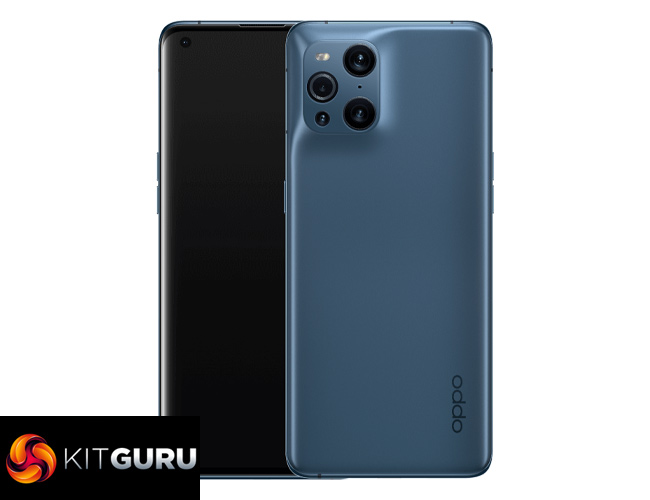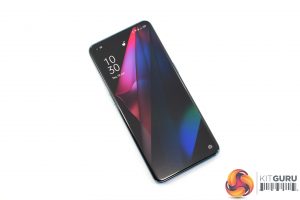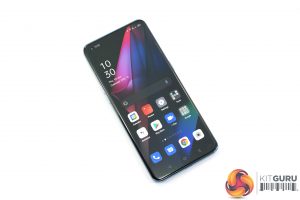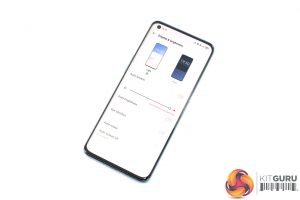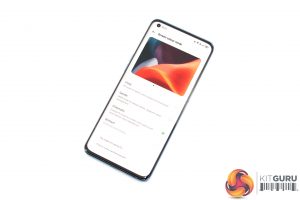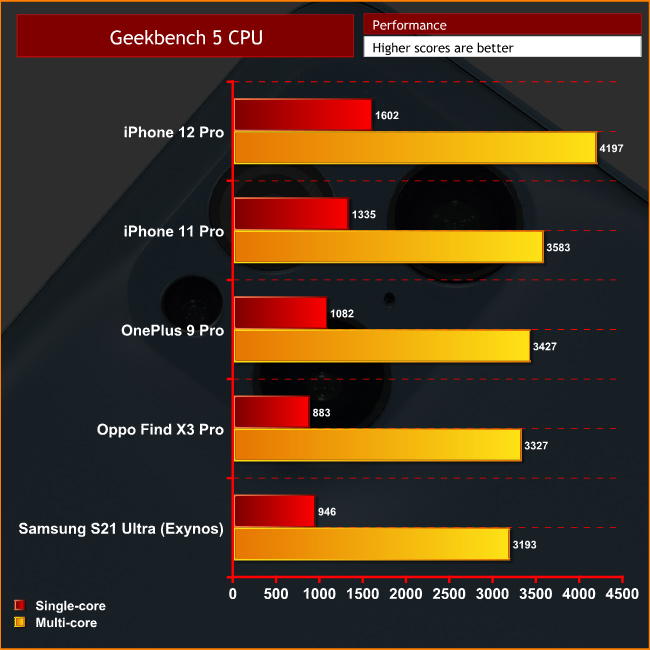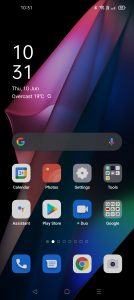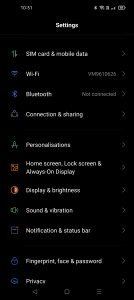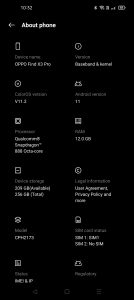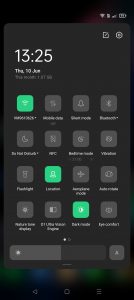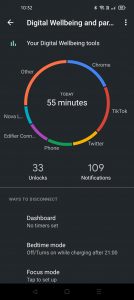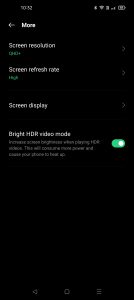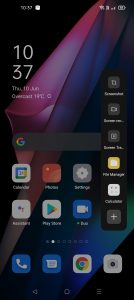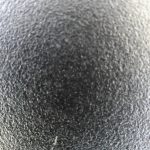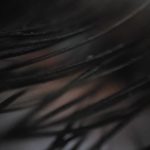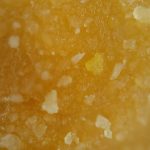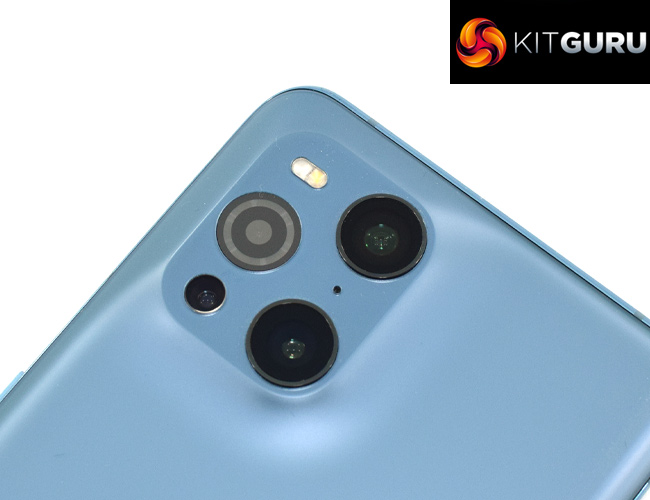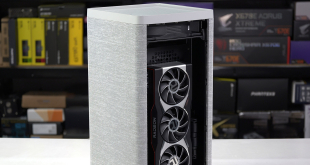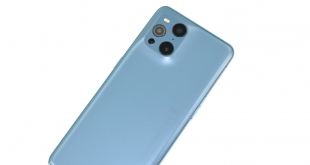
Today we're checking out the latest flagship from Oppo, the Find X3 Pro. For a high-end Android smartphone in 2021, it certainly ticks a lot of boxes, with a large and fast OLED display, quadruple camera setup, as well as the latest-and-greatest Snapdragon 888. Oppo has also implemented super-fast charging thanks to its SuperVOOC technology, while the display is even a native 10-bit panel.
While Oppo isn't what I'd call a household name here in the UK, the company is the fourth-largest smartphone manufacturer globally, shipping 38 million units in Q1 2021. The Find X3 Pro is its top-end device, priced at £1099. It certainly has a lot going for it on paper, with plenty of other features we haven't even mentioned yet – but is it worth the outlay? Let's find out.
Specifications:
- CPU: Snapdragon 888
- Display: 6.7in, 3216×1440 120Hz 10-bit LTPO AMOLED
- Rear Cameras: 50MP wide, 50MP ultrawide, 13MP telephoto, 3MP microlens
- Front Camera: 32MP wide
- Battery: 4500 mAh
- Memory: 12GB
- Storage: 256GB UFS 3.1
- IP Rating: IP68
- Dimensions: 163.6 x 74 x 8.3 mm
- Weight: 193g
- OS: Android 11, ColorOS 11.2
Design
Looking first at the X3 Pro's design, it's certainly a good-looking smartphone. I've got the blue model, but it looks like only the black option is available in the UK. Still, we can see a Gorilla Glass 5 panel on the front, and yes it is slightly curved over the edges of the phone – usually I prefer a flat screen, but the curve isn't too drastic here and I can't say it bothered me during my testing.
The right-hand side of the phone is home to the power/lock button, pleasingly accented with a tinge of green. On the left-hand edge there's the volume buttons, while the bottom edge is home to the USB-C port, speaker and SIM tray. Incidentally, the SIM tray supports dual Nano-SIMs, but there's no expandable storage.
The rear of the phone is quite striking. Oppo tells us this is a single glass piece, which was mapped with over 2000 points to create the panel we see here. It all flows upwards towards the prominent camera bump in the top left corner, where we get a look at the four camera modules.
Here, there's actually two primary cameras – both the wide and ultrawide cameras uses the same 50MP Sony IMX 766 sensor, the former with an f/1.8 lens while the latter is narrower at f/2.2. There's also a 13MP telephoto with f/2.4 aperture, while the final module is very unique. This is a 3MP microlens, offering up to 60x magnification. It's basically a microscope, giving an incredibly close look at your subject. This is of course something we look at later in the review.
The other thing to note is the small hole-punch selfie camera, positioned in the top left-hand corner of the display. This is again very innocuous and didn't bother me during my use-case – and coming from the iPhone 12 Pro, the notch-less design was very welcome.
Display
As for the display, there is certainly a lot going on here. First and foremost, it's a 20:9 aspect ratio with a 3216×1440 resolution, so it is absolutely pin-sharp over the 6.7in panel.
It's also a very fast screen, with a 120Hz refresh rate which really does help make scrolling feel significant more fluid than on a 60Hz phone. Oppo is also using an LTPO OLED panel, meaning the refresh rate is variable and can drop as low as 5Hz, so if you're only looking at a static image or sat on your home screen, it won't be running at 120Hz the whole time, which is of course going to help battery life.
There's another key feature too – this screen is a native 10-bit panel, with Oppo calling it the ‘billion colour display'. That is certainly a USP, but how useful or beneficial that is is another matter. I like to consider myself a technical person with a keen interest in technology, but I was struggling to notice the difference between a 10-bit image and an 8-bit image when viewed on the Find X3 Pro. Watching The Witcher on Netflix, side by side with the same episode on my iPhone 12 Pro, also didn't yield a visible advantage for the 10-bit panel.
Either way though, it is still a hugely impressive screen, even if the 10-bit panel may not be as revolutionary as Oppo makes out. Colours look very rich and vibrant, with the excellent contrast you'd expect from an OLED screen. Oppo also offers a few different display modes to choose from, including ‘vivid', ‘gentle' and ‘cinematic', the latter of which was my preferred setting. In short, it really is a top-tier screen.
Performance
As we'd expect from a top-tier Android device, the Oppo Find X3 Pro uses Snapdragon's 888 SoC, and that's paired with 12GB RAM. It goes for all phones using this chip, it's just as fast as it gets on Android right now. The Apple chips do out-score it in the likes of Geekbench 5, but for day to day use its just as fast as you could want.
That means zero lag when switching between apps or opening new ones, while I could level absolutely no complains when playing Genshin Impact or PUBG mobile. The perceived speed of the phone is also helped by the 120Hz panel, which really is noticeable over a 60Hz display, so there's no hitching or lag when scrolling through Twitter or Instagram.
The selfie camera's facial recognition technology is also rapid, it's near enough instant as soon as I press the unlock button. How secure it is though, I couldn't tell you, and it does have issues in darker environments. The in-screen fingerprint scanner works very well though, and is similarly near-instantaneous.
Software
In terms of software, the Find X3 Pro is of course built on Android 11, and it uses Oppo's ColorOS skin, specifically version 11.2 at the time of writing.
Generally, this Android implementation is absolutely fine. I can't really level many serious complains about it, other than the fact I do feel it looks a bit out-dated in terms of its UI elements – the quick settings menu, for instance, could do with a little facelift, and I would always replace the stock launcher with Nova Launcher.
It's still Android though and credit to Oppo, they've not filled the thing with bloatware that I'd immediately uninstall anyway, while you are of course free to customise the icon packs and other visual elements to your liking.
One quirk that did annoy me was the placing of the screen's resolution and refresh rate within a sub-menu in the Display settings area, which is quite out of the way and a pain to get to, but again we're hardly talking major issues here.
There's also a couple of neat features that I found useful, such as pressing and holding on the fingerprint scanner after the phone has unlocked to call on a few app shortcuts as soon as you've got onto your home screen. There's also Smart Sidebar, which again provides easy access to a few apps of your choosing, meaning you don't always have to go back to the home screen every time you want to open Tik Tok or YouTube for instance.
Overall, like I said – no real complains from me, the software feels fast and easy to navigate, with everything you expect from Android 11 – and then a bit more thanks to ColorOS.Camera
To recap the four rear cameras of the Oppo Find X3 Pro, we two 50MP Sony IMX 766 sensors, with a wide (f/1.8) and ultrawide (f/2.2) lens. There's also a 13MP telephoto with f/2.4 aperture, and the 3MP microlens.
Let's start with a look at general image quality – here we've taken a photo at 0.6x, 1x, 2x, and 5x zoom levels in the stock camera app. These are completely unedited, straight from camera:
As we can see, image quality is very solid across the board. The photos from the standard wide-angle lens do look the best to my eye, but the 2x zoom is also very clean. Things certainly look noticeably softer as we step up to the 5x zoom however, and that's because the 5x mode is actually a hybrid zoom – combining data from the wide and telephoto cameras. The telephoto itself is a native 2x zoom, so once you get beyond that image quality does go downhill. Not drastically, but compared to many other flagships the zoom capabilities of the Find X3 Pro come up slightly short.
There is also a noticeable difference in white balance, or general colour presentation, as we move from the wide-angle to the 2x lens. Thankfully, the ultrawide and the wide-angle, both of which use identical sensors, are very consistent, but stepping from the 1x to the 2x does result in colours typically looking a bit more washed out.
Of course, this is being hyper-critical – but I'd argue that's exactly what you should be with a £1099 phone. For your every day photos, the image quality is very impressive indeed. There is also the ability to take photos with 10-bit colour depth, but as mentioned earlier I was struggling to tell them apart from regular 8-bit photos when viewed on the Find X3 Pro.
One thing I did also notice is the lens distortion on the ultrawide camera. In my view, this is 100% to be expected and it's the same on my iPhone 12 Pro – but Oppo specifically notes its use of a ‘freeform lens surface coating', saying the ‘ultra-wide camera physically corrects distortion'. I'll be honest, I can't see if it has based on these samples. It's still an excellent ultrawide, mind, but perhaps Oppo is being too ambitious with its marketing.
What really is quite fascinating is the 3MP microlens camera. This lets you get impossibly close to a subject, with Oppo recommending the camera be held 1-3 milimetres from the subject. That's so close Oppo even put a ring light around the lens to provide its own light source, as you'd be blocking out so much light with the phone being so close.
It can take some hugely interesting, and frankly scary-looking images, and really is unlike anything I've ever seen before. The thing I would say though, is that during the first week of my testing, I was very excited to try out this new camera on anything I could. In the weeks since… I've taken barely any photos with it, for me the novelty factor definitely wore off. It's still something hugely unique, but as to how much you will actually use it long-term, that's another matter.
Battery
Coming now to battery life, the Find X3 Pro is fitted with a 4500mAh cell and it does a great job at keeping the phone ticking over. Interestingly, the Find X3 Pro does come set to FHD+ resolution by default, instead of QHD+. I instantly switched to the higher resolution, and did all of my testing with the phone at its maximum 120Hz refresh rate too.
On my heaviest days of use, I saw over five and a half hours of screen-on time before getting into bed, and even then I still had about 15% battery remaining. Lighter days could see me hit 2-3 hours of screen-on time and still get to the end of the day with over 50% battery remaining. It really is very solid and I never left the house feeling I might run out while not at home.
If you do need a quick top up though, I can't speak highly enough of Oppo's 65W SuperVOOC charging. This unit is included in the box (take notes, Apple), and offers frankly ludicrous speeds. Oppo claims a 40% charge in just ten minutes, and based on my use-case that is spot on. In fact, there were times when I'd get into bed, plug the phone in, and after just scrolling social media for 20 minutes, the phone was already back to 100% battery. Thankfully there is also an optimised night charging mode where the phone won't fully charge until an hour or so before you wake up to prevent damage to the battery's long term health.
I've really enjoyed using the Oppo Find X3 Pro over the last few weeks and it's proven to me it is a high-quality Android smartphone that is definitely up there with the best.
Part of that feeling is based on the fact this phone just ticks all the boxes. High quality, high refresh-rate OLED panel? Check. Latest-and-greatest Snapdragon SoC? Check. Impressive camera array? Check. And I could go on – with other areas including the sleek design, top-notch battery life and super-fast charging.
In all honesty, it leaves a phone without any real weaknesses. If I were to nit-pick, some UI elements of ColorOS look like they could do with a face-lift, while the ultrawide camera also shows clear distortion, despite Oppo's claims to the contrary. Those are very minor points though and would barely be a passing thought when considering which new phone to buy.
The main thing I'm left wondering about is the price-tag. As good as this phone is, I think £1099 is a lot to ask of UK buyers, particularly when Oppo doesn't have the same brand recognition as Samsung on these shores. The S21 Ultra, for instance, is similarly specced-out and is also very similarly priced on Amazon right now.
Oppo has clearly tried to give itself a differentiating factor with its microlens camera, but personally I wouldn't see it swaying me one way or the other. It's a really cool feature for sure, but at the end of the day the novelty does wear off and you find yourself using it less and less. At least, that was the case for me.
Regardless, Oppo has made a highly impressive flagship with the Find X3 Pro and I think the company will have a lot to say in the flagship Android smartphone conversation going forward. Ultimately I think the high price may just prevent this phone getting into as many pockets as it might otherwise have, but it's still an excellent choice that does little wrong.
You can buy the Find X3 Pro directly from Oppo for £1099 HERE.
Discuss on our Facebook page HERE.
Pros
- Svelte design.
- Excellent display.
- Impressive wide and ultrawide cameras.
- Fast as you'd expect.
- Very good battery life – and even better fast charging capabilities.
Cons
- Pricey.
- Microlens camera is cool but the novelty wears off.
KitGuru says: It's a very impressive all-round phone, though competition is very stiff at this price point.
 KitGuru KitGuru.net – Tech News | Hardware News | Hardware Reviews | IOS | Mobile | Gaming | Graphics Cards
KitGuru KitGuru.net – Tech News | Hardware News | Hardware Reviews | IOS | Mobile | Gaming | Graphics Cards


